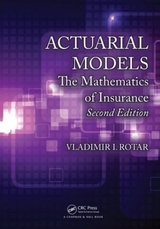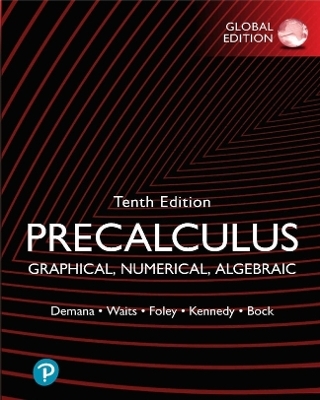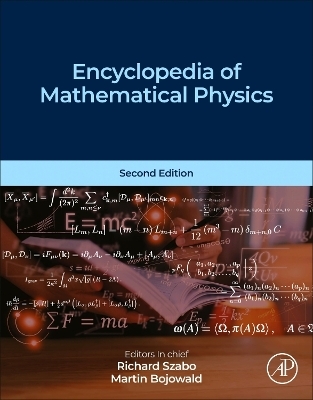
Probability and Stochastic Modeling
Chapman & Hall/CRC
978-1-58488-586-3 (ISBN)
- Titel erscheint in neuer Auflage
- Artikel merken
A First Course in Probability with an Emphasis on Stochastic Modeling
Probability and Stochastic Modeling not only covers all the topics found in a traditional introductory probability course, but also emphasizes stochastic modeling, including Markov chains, birth-death processes, and reliability models. Unlike most undergraduate-level probability texts, the book also focuses on increasingly important areas, such as martingales, classification of dependency structures, and risk evaluation. Numerous examples, exercises, and models using real-world data demonstrate the practical possibilities and restrictions of different approaches and help students grasp general concepts and theoretical results.
The text is suitable for majors in mathematics and statistics as well as majors in computer science, economics, finance, and physics. The author offers two explicit options to teaching the material, which is reflected in "routes" designated by special "roadside" markers. The first route contains basic, self-contained material for a one-semester course. The second provides a more complete exposition for a two-semester course or self-study.
Vladimir I. Rotar is a professor in the Department of Mathematics and Statistics at San Diego State University. Dr. Rotar has authored four books and more than 100 scientific papers on probability theory and its applications in leading mathematical journals.
Basic Notions
Sample Space and Events
Probabilities
Counting Techniques
Independence and Conditional Probability
Independence
Conditioning
The Borel-Cantelli Theorem
Discrete Random Variables
Random Variables and Vectors
Expected Value
Variance and Other Moments. Inequalities for Deviations
Some Basic Distributions
Convergence of Random Variables. The Law of Large Numbers
Conditional Expectation
Generating Functions. Branching Processes. Random Walk Revisited
Branching Processes
Generating Functions
Branching Processes Revisited
More on Random Walk
Markov Chains
Definitions and Examples. Probability Distributions of Markov Chains
The First Step Analysis. Passage Times
Variables Defined on a Markov Chain
Ergodicity and Stationary Distributions
A Classification of States and Ergodicity
Continuous Random Variables
Continuous Distributions
Some Basic Distributions
Continuous Multivariate Distributions
Sums of Independent Random Variables
Conditional Distributions and Expectations
Distributions in the General Case. Simulation
Distribution Functions
Expected Values
On Convergence in Distribution and Probability
Simulation
Histograms
Moment Generating Functions
Definitions and Properties
Some Examples of Applications
Exponential or Bernstein-Chernoff’s Bounds
The Central Limit Theorem for Independent Random Variables
The Central Limit Theorem (CLT) for Independent and Identically Distributed Random Variables
The CLT for Independent Variables in the General Case
Covariance Analysis. The Multivariate Normal Distribution. The Multivariate Central Limit Theorem
Covariance and Correlation
Covariance Matrices and Some Applications
The Multivariate Normal Distribution
Maxima and Minima of Random Variables. Elements of Reliability Theory. Hazard Rate and Survival Probabilities
Maxima and Minima of Random Variables. Reliability Characteristics
Limit Theorems for Maxima and Minima
Hazard Rate. Survival Probabilities
Stochastic Processes: Preliminaries
A General Definition
Processes with Independent Increments
Brownian Motion
Markov Processes
A Representation and Simulation of Markov Processes in Discrete Time
Counting and Queuing Processes. Birth and Death Processes: A General Scheme
Poisson Processes
Birth and Death Processes
Elements of Renewal Theory
Preliminaries
Limit Theorems
Some Proofs
Martingales in Discrete Time
Definitions and Properties
Optional Time and Some Applications
Martingales and a Financial Market Model
Limit Theorems for Martingales
Brownian Motion and Martingales in Continuous Time
Brownian Motion and Its Generalizations
Martingales in Continuous Time
More on Dependency Structures
Arrangement Structures and the Corresponding Dependencies
Measures of Dependency
Limit Theorems for Dependent Random Variables
Symmetric Distributions. De Finetti’s Theorem
Comparison of Random Variables. Risk Evaluation
Some Particular Criteria
Expected Utility
Generalizations of the EUM Criterion
Appendix
References
Answers to Exercises
Index
Exercises appear at the end of each chapter.
| Erscheint lt. Verlag | 20.9.2006 |
|---|---|
| Zusatzinfo | 13 Tables, black and white; 110 Illustrations, black and white |
| Sprache | englisch |
| Maße | 178 x 254 mm |
| Gewicht | 1361 g |
| Themenwelt | Mathematik / Informatik ► Mathematik |
| ISBN-10 | 1-58488-586-6 / 1584885866 |
| ISBN-13 | 978-1-58488-586-3 / 9781584885863 |
| Zustand | Neuware |
| Haben Sie eine Frage zum Produkt? |
aus dem Bereich


